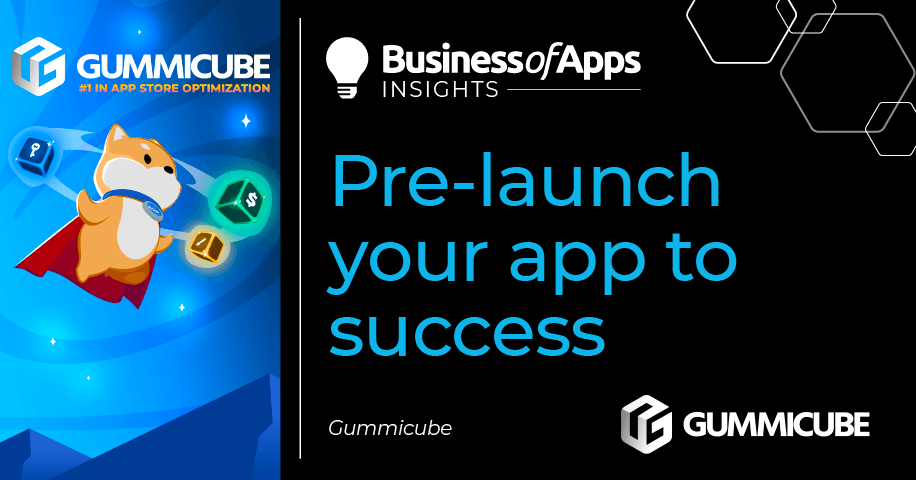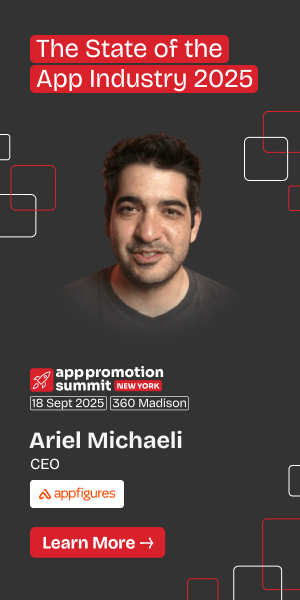Did you know that there are thousands of new apps added to the app stores daily? Across Apple’s App Store and the Google Play Store, there are nearly 6 million apps on the market – and counting.
Launching an app in such a congested environment can be an intimidating endeavor for developers across all app categories. Some developers face a higher barrier to entry than others. Lifestyle, Gaming, Shopping, and Productivity app categories dominate the space with a wide variety of features – making it difficult to cut through the noise.
Launching an app in any of the app store categories is relatively easy – but making it on the app store is not. Initial and continued success is highly contingent upon the App Store Optimization (ASO) strategy the developer puts in place. Even apps with high notoriety struggle to maintain visibility after the initial hype of their launch settles.
The hard truth of app launch shows us that discoverability must be worked upon. Popularity alone can’t sustain high visibility on the app stores. As ground-breaking as your app features may be, there are strategic actions all developers must take to ensure users can even find the app in the first place. When all the dust settles, does your app have what it takes to remain competitive?
After all the hard work and time you put into creating your app, it would only be fitting to make sure that the launch is just as successful as the development stage. With high competition, developers can’t afford to fall into app myopia. Features can’t speak for themselves unless they have a podium that allows them to compete. Through ASO, developers can give their app the strong foundation it needs to succeed even before it launches.
In this article, we’ll explore how developers can put their best foot forward in their app launch strategy by answering some common app launch FAQs.
What is pre-optimization?
Before you launch your app on the app store, performance rehearsals are in order. Think of your app launch as a play. Before every grand opening or debut, the actors and stagehands all need to prepare beforehand to ensure all or most of the performance runs smoothly. Launching an app is very similar to this process; however, many developers often resort to more improvised launches. This leaves their app just getting a few downloads a day, when in fact they could be getting a lot more if they optimized.
Pre-optimization leaves no room for improv app store performances. To prepare for the grand app store stage, there are critical actions all developers must take to make a grand entrance. Pre-optimization involves thorough market and keyword research as well as, creative and metadata optimization before launching an app.
Will Paid Search marketing help my app launch be more successful?
It depends! Advertising and marketing on the App Store and Google Play are invaluable in giving your app an extra boost. Apple Search Ads (ASA) and Google Ads help with keyword and category ranking. Paid marketing campaigns can also help you build relevancy among users and the app store algorithms. But for all these wonderful things to happen, organic ASO is necessary.
Ultimate App Growth Guide 2025
Boost your app’s success with the Ultimate App Growth Guide! 🚀 Expert insights, proven strategies & must-know tips. Download now!
Master app growthMany developers rely solely on paid search campaigns during their app launch phase, but any growth they may see is only temporary. Organic search growth and paid marketing campaigns work in tandem. Without organic growth, developers can only expect to see pop and drop results. This is true of big-name or popular apps as well. If a developer decides to halt their ASA, Google Ads, or external marketing campaigns, can the app still be recalled or found by users? Often, users don’t immediately download an app right after they see an ad, so it’s important to build on organic growth. This ensures that when the paid marketing campaigns stop, users can still find your app on the app store.
Can I know how effective my metadata and creatives are before launching?
Yes! Even before your app launches, there are ways you can test these elements’ effectiveness. Metadata elements get indexed by the app stores and are responsible for discoverability potential and keyword rankings. Creatives do not get indexed in this process, so they are directly responsible for conversion. Native A/B testing platforms on Apple like PPO and CPP, or Google Play’s Google Play Experiments let you test only some of the elements of your app page. However, these platforms only allow you to test AFTER you launch your app – a limitation that leaves one of the most important steps in your app launch to chance.
Pre-launch A/B testing is not out of reach. Understanding what creative and metadata assets drive the most conversion and visibility allows developers to reach users right from the start. External A/B testing with ASO technology, Splitcube, allows developers to test every element of their app without needing to launch. With such high competition, developers need to mitigate as many “what if-s” as possible in their app launch. External A/B testing helps developers eliminate that guesswork.
Overall
To enter the app store grand stage, developers must arm themselves with the tools, knowledge, and ASO strategy to build and maintain future success. Pre-optimization is an integral part of a successful app launch. It allows developers to prepare for a highly competitive app store market, and it gives developers a springboard for effective paid marketing campaigns down the line. It’s not a very good idea to leave app launches to chance. Relying on notoriety or feature uniqueness alone simply doesn’t work in building long-term growth. Forgoing pre-optimization may set your performance back significantly compared to those who had one from the very start. Through external A/B testing and pre-optimization, developers can set the stage for continued and sustainable growth.











